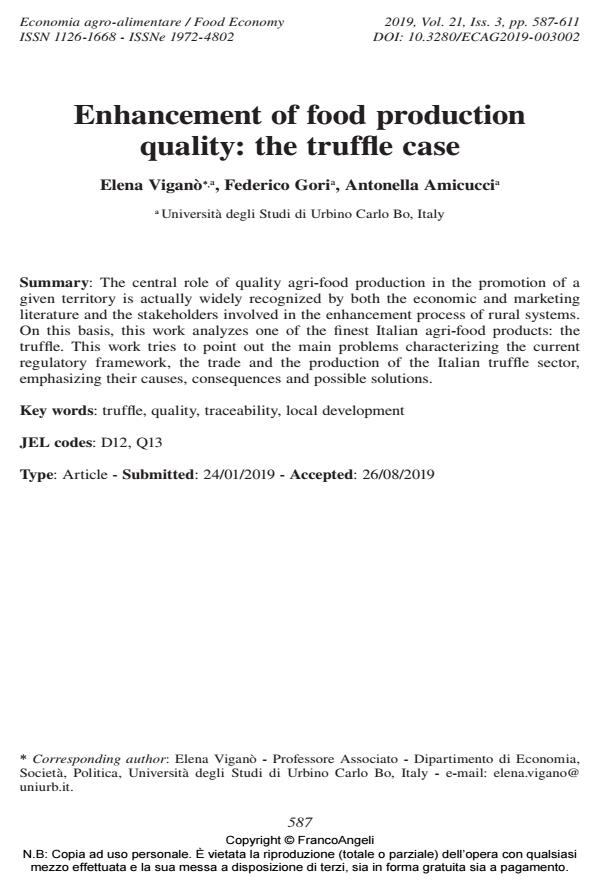Enhancement of food production quality: the truffle case
Journal title ECONOMIA AGRO-ALIMENTARE
Author/s Elena Viganò, Federico Gori, Antonella Amicucci
Publishing Year 2020 Issue 2019/3
Language English Pages 25 P. 587-611 File size 194 KB
DOI 10.3280/ECAG2019-003002
DOI is like a bar code for intellectual property: to have more infomation
click here
Below, you can see the article first page
If you want to buy this article in PDF format, you can do it, following the instructions to buy download credits

FrancoAngeli is member of Publishers International Linking Association, Inc (PILA), a not-for-profit association which run the CrossRef service enabling links to and from online scholarly content.
The central role of quality agri-food production in the promotion of a given territory is actually widely recognized by both the economic and marketing literature and the stakeholders involved in the enhancement process of rural systems. On this basis, this work analyzes one of the finest Italian agri-food products: the truffle. This work tries to point out the main problems characterizing the current regulatory framework, the trade and the production of the Italian truffle sector, emphasizing their causes, consequences and possible solutions.
Keywords: Struffle, quality, traceability, local development
Jel codes: D12, Q13
- Status of truffle science and cultivation in North America Mark D. Coleman, Shannon Berch, Gregory Bonito, Brian Allen, Ellie Andrews, Elva T. Arechiga Carvajal, Stephen P. Cook, Cameron D’Amours, Roberto Garibay-Orijel, Gonzalo Guevara, Patrick Hatzenbuehler, Barbara Hawkins, Robert Heinse, Gavin Kernaghan, Charles Lefevre, Benjamin Lemmond, Inga M. Meadows, Scott Oneto, Jyotsna Sharma, Daniel G. Strawn, Joey B. Tanney, Aziz Türkoğlu, Jessie Uehling, Jason Winfree, Matthew E. Smith, in Plant and Soil /2025 pp.625
DOI: 10.1007/s11104-024-06822-4
Elena Viganò, Federico Gori, Antonella Amicucci, Enhancement of food production quality: the truffle case in "ECONOMIA AGRO-ALIMENTARE" 3/2019, pp 587-611, DOI: 10.3280/ECAG2019-003002